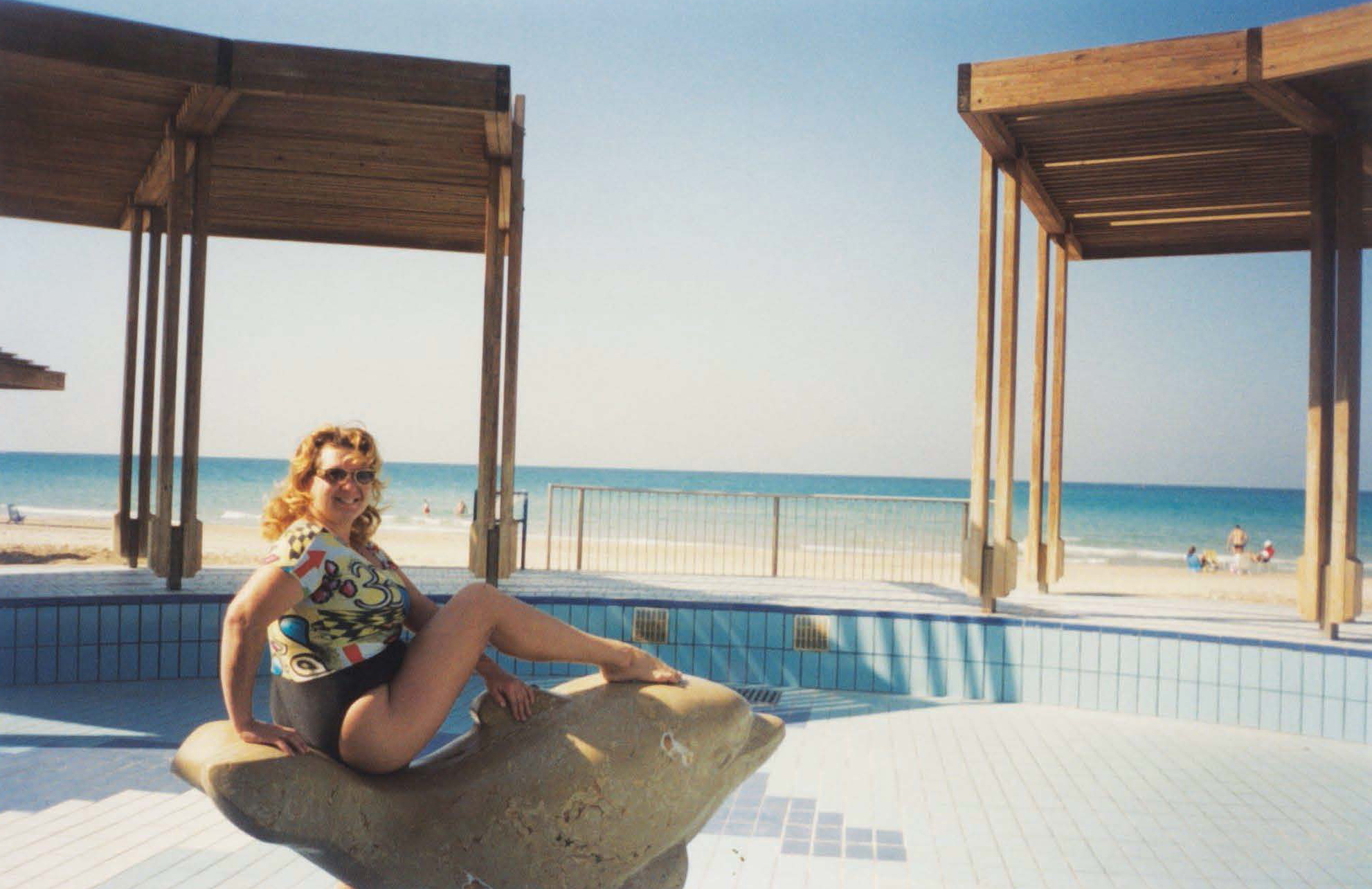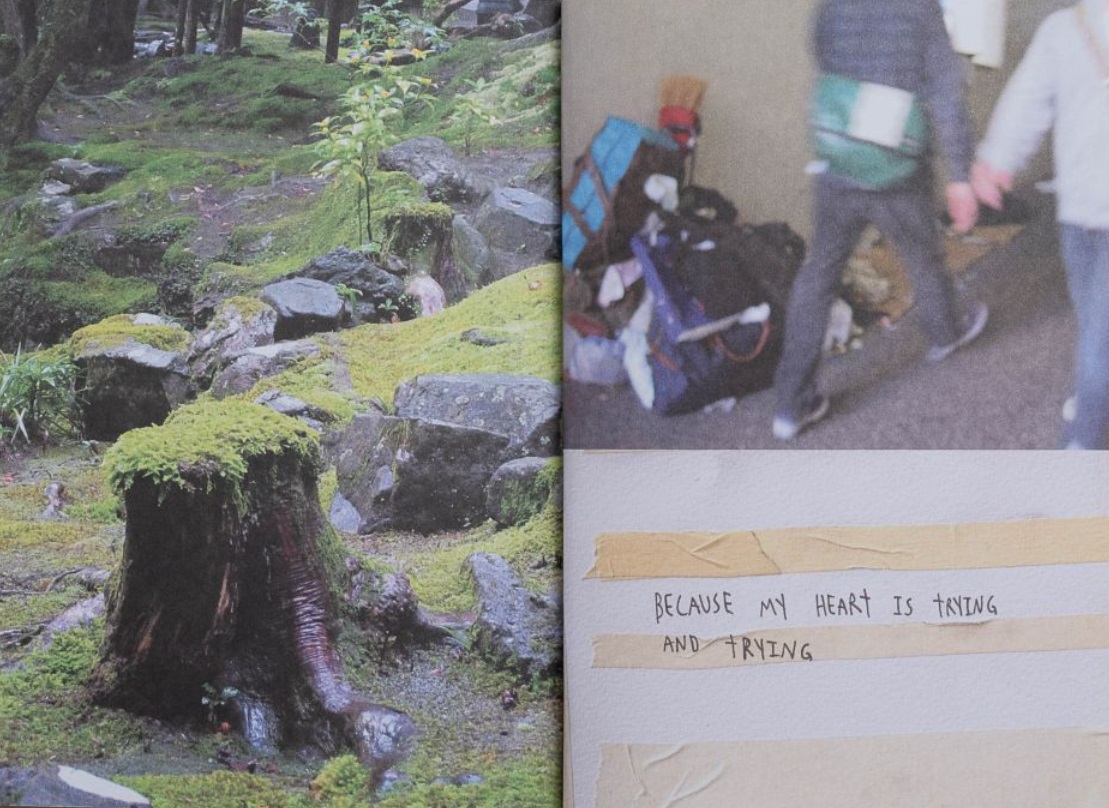How did this book come about?
The book came out of an exhibition called “No Thing Dies” shown at The Israel Museum, Jerusalem. The entire project took three years and was exhibited in 2017. The book was published in 2019.
Do you think of it as a catalog of the exhibition or an artist’s book?
I see it as a book of this special project, a large part of which remains obscure. There is always a thought-provoking gap in the projects I do between the exhibit and the research process, which usually remains hidden. In the book, I wanted to bring some of the research materials, the interviews, and the processes in the studio to the forefront.
What process does the book embody for you?
Today, it is clearer to me that oral history, the one that is preserved by people, witnesses, can fill in the black holes in written history as we know it. The one that is carefully edited by those in power, who usually get to determine how we will understand historical events. The center of my interest is the ostensible marginal evidence. The way to reach that is through testimonies and stories.
The first chapter of the project was a whole year of interviews with people who have been working at the museum for decades, some even from its founding. The project was carried out around the time when the museum was celebrating a jubilee, and naturally it was also a time of a generational change within the institution. An entire generation of workers in various positions, administrative staff, collection managers, researchers and curators retired. I interviewed them just before their told and untold knowledge disappears with their departure. This situation, where people work for 50 years in a museum, will not happen again in my opinion. And obviously, these people had dreams regarding their work, some of which never materialized. To understand the museum’s hierarchical structure and dynamics, you have to go down to the depths, like a shipwreck at sea.

And what did you discover?
I gathered information, of which some will never be voluntarily revealed by the museum. For example, conflictual stories related to historical artifacts. Exhibits that can confirm or dispel territorial perceptions. This is no small matter in a place like Israel where territory is a constant focus of discussion. For example, a 4cm-sized artifact in the shape of a pomegranate made of ivory was displayed for about 20 years in a showcase and was once one of the most important exhibits in the Israel Museum. The story is long and detailed but I will make it brief. The object was purportedly the only physical proof of the First Temple. After being on display for 20 years, it was removed from exhibition because of the demand by a team of researchers and experts to examine its authenticity, and who, after comprehensive examination, pronounced it a fake. Imagine the crisis this caused inside the museum. A crisis for Jewish history. The war over that little piece of ivory is still being fought far from the public eye, and so much money has been spent on the research about it. Money that wasn’t given to other departments.
The question that preoccupied me was why isn’t this silent struggle and the various findings being put out in the open? After all, it contains much more recent, human and important information about the flexible nature of time, about the struggle that is being placed on the shoulders of these fragile objects, about the politics and forces at play behind each historical chapter. There is a similar battle going on with almost every object I photographed. I think that to describe these conflicts is to tell history in way that is more faithful to reality.
The Israel Museum is an encyclopedic museum. How did this affect your project?
The project's mandate was to interview and include people from all departments. I came to it first with a curiosity to describe the route that artifacts take from the “dark” of the storeroom to the “light” of the display. It also involved figuring out which objects would never see the light of day and why. Those responsible for the collections are engaged in constant study. They have an interest in objects being presented, and also conclusions about them, in a way that will validate historical insights.
What is it like listening to so many people over the course of a year?
It really depends. Sometimes it’s fascinating and all the senses are involved, like in a movie where the chair, the cinema and the hall disappear. Sometimes it’s torture. In the transcripts, we discovered many things that were difficult to grasp while listening. I came to understand that listening and reading are two very different qualities. After transcribing everything, words and nods, we returned to the departments in the museum, and this opened a new channel of listening. We went back to them with a list of all the objects mentioned in the stories. Then we started photographing. That is, the first year was collection, and the second year we created the visual archive, which included the fragments we worked with in the third year in order to produce the compositions.
So in what way does the book reveal the research process?
The compositions I build are like the “remedy” of the process, a diluted mixture, like in homeopathy. All 753 objects mentioned in the fascinating stories were cataloged in my archive from several angles. The final works were made from that visual archive, not all of which was shown. We revealed part of it in the book, as well as the internal logic on which it was structured. In general, the book offers a platform to the nature of the process, which included a lot of teamwork. At that time I learned a lot from Dr. Naama Brosh who works in the Islamic Art Department. She explained to me about the Persian miniatures, which were history books commissioned in advance by the Persian kings to reveal to their people the course of their reigns. Real propaganda of those times. The idea of a narrated and reorganized history seems to me like a very apt parallel for my project.
How did the rules of the miniatures affect the works and the book?
First of all, in the absence of hierarchy: there are many details in each painting and they are without any hierarchy. Second, what could not be said in the text was painted, so one had to learn to read the concealed and the revealed in the context of the text and the paintings. Teamwork is another thing related to the process of creating the miniatures. It was the joint work of a large number of people, a real laboratory. There were those who were responsible for the outlines, others for the gilding, and still others for painting in the faces, and so on. For example, you can see in some places that the facial features change depending on the origins of the person who drew them. Also the project was made possible thanks to the multi-participant teamwork, of the curator Noam Gal, the studio team and all the members of the museum. There were many decision makers who influenced the course of things and the final result.

So the book makes up for something that couldn't happen in the exhibition?
Yes. When the exhibition was over, there was no room for the system behind the project. I became very attached to what I had in the studio. I felt like I was actually living in the museum, with all the images of the objects and the stories surrounding them. After the works were assembled, this potential space disappeared, the exhibition could not contain it; the book could. It also gives space to textual influences that had no place in the exhibition, such as Ursula Le Guin. Right before she passed away, we managed to get confirmation of the text that appears in the book. There is a text by Maureen Dietrich, the curator who also edited the book’s content, a text by Noam Gal, Katnan Miyasu, and my own text. The place where the transcripts were set free was the collaboration with Ruth Kenar’s wonderful theater group that created a performance that was shown in the exhibition space 3 times a day once a week.
The name of a book is like a secret. Will you let us in on it?
That was also related to conflict. I wanted to call the exhibition “The Essence of Things,” and that’s what I called it in Hebrew. Noam Gal, the curator of photography at the Israel Museum at the time, wanted to call it No Thing Dies. There was a mutual stubbornness, and we decided to have two names, one in Hebrew and one in English.
Is there something important you found out about making books?
That it’s not something that is appended to something else. It requires many resources and your complete attention. One should know this in advance. I don’t see a situation where I will ever be able to do an exhibition with a book like this as an accompaniment.
To whom would you (or did you) dedicate the book?
I want to dedicate it the artist Jonathan Tuitou, who is also my partner. We collaborate and his thinking is woven into every one of my projects.
What book should we add next to our library?
Ruven Kuperman with his latest book, and Jonathan Tuitou’s new and subversive book “Politically Creaks” about the BAAD Gallery that was active from 2011 to 2013. The book is coming out soon and deals with the Western dybbuk in Israeli art.
Where can readers get a copy of your book?
The Mousse Publishing website.
Ilit Azoulay, born in Holon in 1972, lives and works in Berlin. She has both a BFA from the Department of Photography and an MFA from Bezalel Academy of Arts and Design, Jerusalem. Azoulay deals with the methods of constructing memory and commemoration through photography and computerized image processing. Her works are based on historical and visual research and are often presented as large-scale digital collages. Azoulay was chosen to represent Israel at the 59th Art Biennale in Venice, which opened in April 2022.





״An entire generation of workers in various positions, administrative staff, collection managers, researchers and curators retired. I interviewed them just before their told and untold knowledge disappears with their departure.״





״The compositions I build are like the 'remedy' of the process, a diluted mixture, like in homeopathy. All 753 objects mentioned in the fascinating stories were cataloged in my archive from several angles. The final works were made from that visual archive, not all of which was shown. We revealed part of it in the book, as well as the internal logic on which it was structured.״










